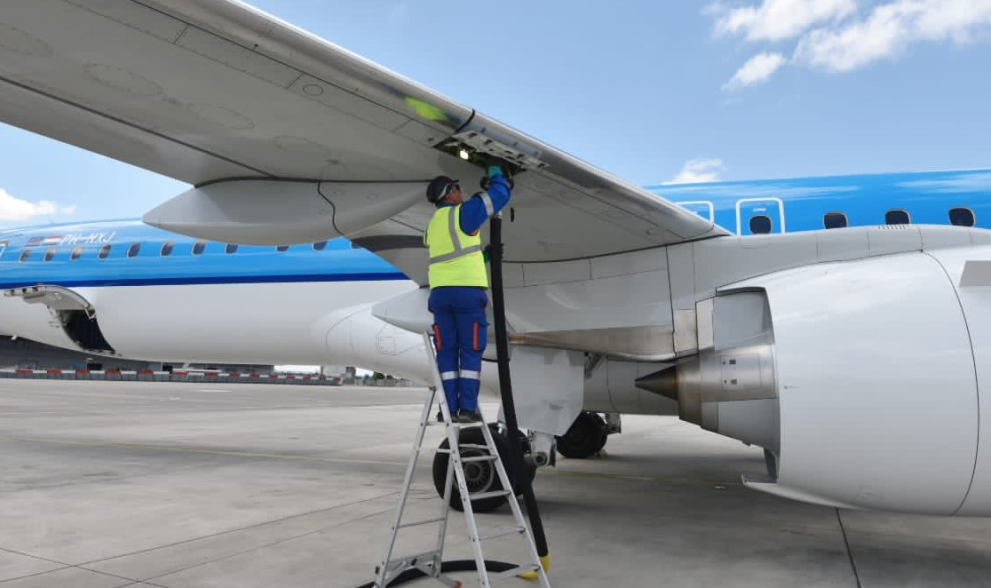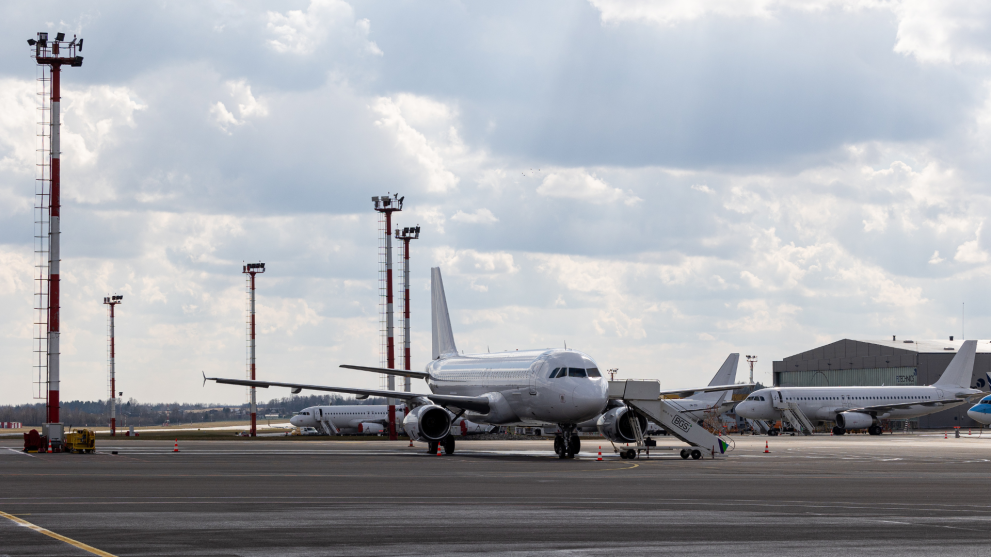ReFuelEU Aviation promotes the increased use of sustainable aviation fuels (SAF) as the single most powerful tool to decrease aviation CO2 emissions. The measure is part of the Fit for 55 package to meet the emissions reduction target of 55% by 2030. It sets requirements for aviation fuel suppliers to gradually increase the share of SAF blended into the conventional aviation fuel supplied at EU airports.
SAF includes synthetic aviation fuels, advanced and other aviation biofuels, as well as recycled carbon aviation-fuels. These blended aviation fuels are fully compatible with the current technology and certified to reach a SAF blend of up to 50%. Research and innovation are being devoted to increasing the maximum blending rate to 100% to untap the full potential of SAF.
The definition of SAF is set out in Article 3(7) of the ReFuelEU Aviation Regulation. It covers drop-in aviation fuels compliant with the sustainability criteria of the Renewable Energy Directive (RED). SAF are defined as:
- Synthetic aviation fuels from renewable hydrogen and captured carbon (in the meaning of Article 2(36) of RED and limited to liquid drop-in fuels only);
- Advanced biofuels from waste and residues notably (produced from feedstock listed in Part A of Annex IX, in the meaning of Article 2(34) of RED);
- Biofuels produced from oils and fats notably (such as from feedstock listed in Part B of Annex IX, in the meaning of Article 2(33) of RED);
- Recycled carbon aviation fuels in the meaning of Article 2(33) of RED.
Aviation fuel suppliers may also decide to comply with the minimum shares by using:
- Renewable hydrogen for aviation as defined in Article 3(16) of ReFuelEU Aviation;
- Synthetic low-carbon aviation fuels and low-carbon hydrogen produced from non-fossil sources, and meeting a lifecycle emissions savings threshold of 70%.
To facilitate the dissemination of information and ensure preparedness of the industry to comply with the obligations, you can find in this page the reporting templates for aviation fuel suppliers to comply with their reporting obligation pursuant to Article 10 RFEUA through Union Database for Biofuels (UDB).
Collaboration of three sectors
The successful implementation of ReFuelEU Aviation requires the collaboration of all parties in the supply chain, in particular aviation fuel suppliers, EU airports and airlines. More than 95% of air transport departing from EU airports will be covered by this new Regulation.

Aviation fuel suppliers at EU airports will gradually increase the share of SAF blended with conventional aviation fuel (Article 4)

Aircraft operators departing from EU airports must refuel with the aviation fuel necessary to operate the flight. This avoids the excessive emissions related to extra weight and minimises the risks of carbon leakage caused by so-called ‘tankering’ practices (Article 5).

EU airports must facilitate access to the necessary infrastructure to deliver, store and refuel aircraft with SAF (Article 6).
Benefits
 Contribution to the EU’s climate targets
Contribution to the EU’s climate targets Creating a level playing field for EU air transport services
Creating a level playing field for EU air transport services Boosting SAF innovation and investments
Boosting SAF innovation and investments Creating new jobs across the EU
Creating new jobs across the EU Incentivising the development of global SAF value chains
Incentivising the development of global SAF value chains
ReFuelEU Aviation will contribute to achieving the EU’s climate targets. The 2030 Climate Target Plan establishes SAF as key to reducing emissions from aviation. The Regulation will bring a substantial reduction of CO2 emissions of more than 60% by 2050, compared to 1990 levels. Additionally, the increased uptake of SAF will help reduce air pollutants such as CO, NOx and PM increasing air quality especially around airports.
One clear set of EU rules and harmonised binding shares on the supply of SAF will mean that aviation fuel suppliers, EU airports and airlines will be able to operate on an equal basis across the EU. ReFuelEU Aviation replaces any national mandates on SAF in Member States, giving a clear signal and market certainty for the large-scale deployment of SAF. A single set of EU rules also means lower compliance costs for all market players. It will also incentivise the development of global value chains as SAF, its feedstock and production technologies can be produced globally with a positive impact on global socio-economic development.
Increased production and uptake of SAF will eventually bring SAF prices down thanks to lower production costs resulting from increased competition, economies of scale and production efficiencies. ReFuelEU Aviation will boost innovation and investments in SAF across the whole supply chain and, most importantly, across all regions of the EU. SAF can be produced in all EU Member States.
ReFuelEU Aviation will create new jobs across the European Union. New SAF production plants across the EU will contribute to cohesion and socio-economic development. SAF will be available at every EU airport, meaning that its production will be incentivised in every region of the EU.
Thanks to the Flight Emissions Label citizens will be empowered to make informed choices when comparing between different flight options. You can find more information on the adoption of the Flight Emissions Label here.
Additional measures
The ReFuelEU Aviation is accompanied by several flanking measures supporting SAF development and deployment. These consist of:
- EU engagement at international level through the International Civil Aviation Organization (ICAO) aiming to raise global ambition on SAF use. The recently launched ACT-SAF project, financed by the EU, will see feasibility studies and capacity building activities implemented in 13 African states and India, with the aim of bringing the States closer to actual SAF production. SAF is also included as a flagship project under the Global Gateway;
- The Renewable and Low-Carbon Fuels Value Chain Industrial Alliance will enhance the cooperation in the SAF value chain and the development of SAF projects;
- Financing to de-risk SAF production at all stages of technology maturity, notably through funding instruments like Horizon Europe, Innovation Fund and InvestEU. Under the conditions of the state aid guidelines (CEEAG), Member States could also support the production of SAF;
- Direct financial support for the uptake of SAF by narrowing the price gap between SAF and fossil kerosene through EUR 20 million of SAF allowances under the EU Emissions Trading System (ETS) to aircraft operators. Furthermore, a stronger price signal though the proposal for the revision of the Energy Taxation Directive providing a preferential treatment to SAF compared to fossil kerosene;
- Accelerating and facilitating qualification of new SAF pathways through establishing of the EU SAF Clearing House and removing administrative barriers for construction of new SAF plants through the Net Zero Industry Act (NZIA); and
- Increased transparency through the EU taxonomy and the environmental labelling schemes. EU taxonomy will facilitate the access to funding for SAF production and uptake, and to private investments earmarked for sustainability, including EU green bonds. The Flight Emissions Label will facilitate informed decision-making by passengers on flight choices. The label is prepared in coordination with Commission’s initiative on the accounting of GHG emissions of transport services, CountEmissions EU.
Have your say webpage on ReFuelEU Aviation
Study supporting the Commission proposal for ReFuelEU Aviation
